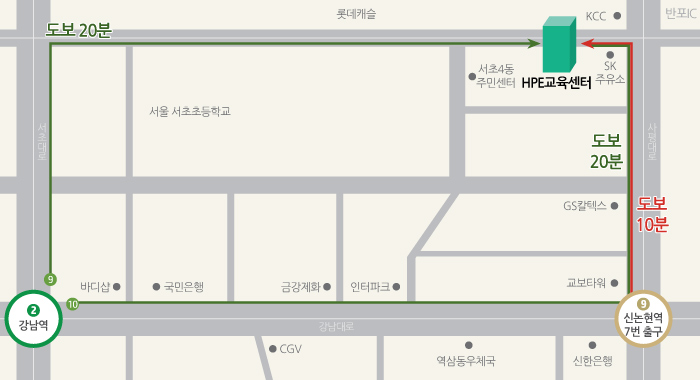HPE-UX > HPE-UX Manageability 과정
HPE Serviceguard II
- 강의기간
-
교육 시작일 후 3일
- 난이도
- 고급
- 수강일
- 3일, 09:30~17:30
- 수강료
-
1,600,000원
KRW (KR)
- 환급
-
비환급과정
※ 비환급과정(면세) 입니다.
- 과목코드
- U8601S
| ※ 본 과정을 신청하는 경우 한국 교육서비스의 Terms&Conditions 에 동의하는 것으로 간주합니다. |
| 과정소개 |
- 이 과정은 데이터센터 환경에서 Oracle 11gR2를 서포트하기위해 CFS 스트럭쳐와 Quorum서비스를 이용하는 방법 및 클러스터 테크놀로지에 대해 학습합니다.
- 수강생들은 Failover 클러스터를 테스트, Quorum서버 또는 lock 디스크 클러스터 설정, ContinentalCluster 설정 과정을 배울 수 있습니다.
- 3일과정으로 40%의 이론과 60%의 실습으로 구성되어 있습니다
|
| 수강대상 |
Serviceguard 클러스터를 구성, 디자인, 설치, 모니터를 하는 HPE-UX 시스템 관리자
|
| 교육내용 |
Introduction - State the pre-requisites and expectations of this training course.
- State the purpose and scope of this training course
- Identify the platforms, operating systems, and software products used in this course
- Configure a cluster quickly from a base operating system install
- Review some ‘new’ Serviceguard features
Multi-node Packages
- Create a multi-node package
- Understand Serviceguard command output for multi-node packages
- Start and stop multi-node packages
- Describe the differences between a fail-over package and a multi-node package
- Explain the limitations of using filesystems in a multi-node package
- Identify the problems of using floating IP addresses in multi-node packages
Serviceguard Storage Management Suite (CFS)
- Understand key features of CFS
- Configure Serviceguard multi-node packages
- Configure CFS Mountpoint multi-node packages
- Create a Serviceguard CFS cluster Serviceguard Extensions for Oracle RAC
- Describe the purpose, architecture and components of SGeRAC
- Install/remove SGeRAC
- Describe the difference between a Failover Cluster and a RAC Cluster
- Install Oracle 11gR2 Clusterware
- Create a Serviceguard package to control Clusterware
- Outline the different storage options available for Clusterware and RAC
- Deploy Oracle software on CFS storage
Extended Distance and Other Clusters
- Understand the four types of clusters
- Understand the difference between the four types of clusters
- Understand the geographic limitations of each of the four types of clusters
Disaster Recovery with Continental Clusters
- Describe the architecture used for HPE's Continental Clusters product
- List two supported methods for performing data replication in a Continental cluster
- Setup and configure a primary cluster in a Continental clusters environment
- Setup and configure a recovery cluster in a Continental clusters environment
- Setup, configure and test a monitoring package for a Continental clusters environment
- Put a recovery group into maintenance mode Setup, configure and run a disaster recovery dress rehearsal
- Revert a cluster after a disaster
- Use commands to monitor the status of a Continental cluster
- Be aware of the implications of data privacy laws on Continental cluster design
Extended Distance and Other Clusters
- Understand the four types of clusters
- Understand the difference between the four types of clusters
- Understand the geographic limitations of each of the four types of clusters
Disaster Recovery Dress Rehearsals with Continental Clusters
- Identify a suitable architecture for TCP/IP migration across clusters
- Understand the uses and limitations of a dress rehearsal
- Perform a disaster recovery dress rehearsal
- Put a package into maintenance mode
- Take a package out of maintenance mode
- Create a dress-rehearsal package
- Understand the important infrastructure changes which are not tested by a DR dress rehearsal
|
| 선수과목 |
- HPE-UX System & Network Administration I (H3064s)
- HPE-UX System & Network Administration II (H3065s)
- HPE-UX Logical Volume Manager (H6285S) or HPE-UX VERITAS Volume Manager (HB505S)
- POSIX Shell Programming (H4322S)
- HPE Serviceguard I (H6487S)
|
| 다음과목 |
- HPE Virtual Server Environment (VSE) curriculum
- HPE-UX partition management with vPars and nPars (U5075S)
- HPE Integrity Virtual Machines (HB506S)
|

- 교육장
- 서울 한국HPE 강남교육센터
- 강의장
- 미지정
- 주소
- 서울 서초구 서초동 1302-2 대지프라자 6층
- 전화
- 1661-9080
- 팩스
- 02-3470-2200
- 주차
-
불가능
- 안내
-
- 9호선 신논현역 7번 출구 50M 직진, SK주유소에서 좌회전 후 30M 전방 도미노피자 건물 6F
- 2호선 강남역 9번 출구
시내버스 : 146, 341
마을버스 : 11 {삼호아파트 하차 (2 정거장)}
도보 : 강남역에서 20분 거리
* 주차불가